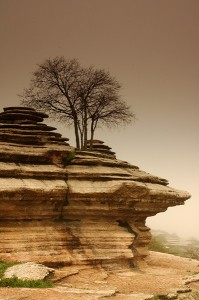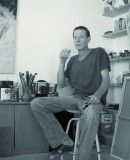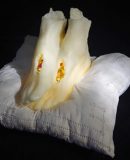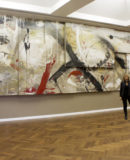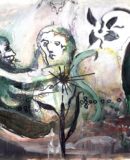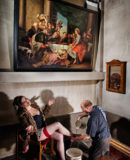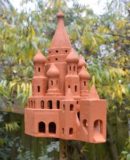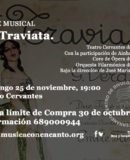The museum of prehistoric Andalucia
Since the ancient Egyptians were erecting the pyramids in Giza, there have been tribes shuffling around the fertile Antequera vega.
It is for this reason that the town – which sits at the dead centre of southern Spain – is often called the ‘Prehistoric museum of Andalucia’.
Indeed, just about every time a major construction job is undertaken in the area, archaeological remains are dug up.
Only in 1998, builders found an incredible set of mosaics at an ancient Roman villa unearthed on the outskirts of the town, near the train station.
Among the remains – said to be some of the best preserved in the world – they found statues, including the priceless Venus of Antequera and the Nero Germanica.
A few decades earlier archaeologists unearthed the exquisite first century bronze sculpture, the Efebo de Antequera, which, despite being 2000 years old, hardly had a scratch.
Then last year, the new motorway to Cordoba was held up for months while archaeologists investigated further Roman villas, plus, more crucially, a series of ancient burial sites dating back more than a thousand years before the birth of Christ.
While a number of priceless statues were removed, it was decided that the motorway should take precedence. They were quickly reburied and covered in sand.
It was perhaps no surprise, given the cost of diverting the already expensive A45 across the complex folds of some of the world’s most famous olive territory.
Then there was the issue of the number of existing burial sites around the town.
Indeed, some of Spain’s oldest tombs – known as the dolmens – are found on the outskirts of the charming market town.
Now national monuments, the dolmens of Menga and Viera, both date from 2,500BC and were built during the Copper Age.
Sometimes described as Spain’s “first real architecture”, they have great views towards the Pena de las Enamorados.
Menga, the largest, is 25 metres long, and four metres high and was composed out of 32 huge stone slabs hewn out of the nearby hills.
Not just a serious feat of engineering, the burial chamber was sited in such a way that as the sun rose on the solstice it shone straight through the chamber mouth.
Nearby, a third dolmen, that of Romeral, is a youngster in comparison dating back to just 1800BC.
But the city has been steeped in a rich and glorious history, right through the Roman, Moorish and finally the Christian periods.
The 19th century traveller Washington Irving, a former US ambassador to Spain, was particularly taken by the city, when he wrote: “Everything in this venerable city has a decidedly Spanish seal.”
It is not for nothing that locals insist that 70 per cent of the ‘patrimonio’, or heritage, of Malaga province can be found in the city.
“It is even difficult for the main city of Malaga to compete as it got so badly treated during the civil war,” explains Silvia Jurado, president of the local tourism initiative CIT.
“There are so many gems here, you would be hard pressed to see them all in a weekend.”
This quickly becomes obvious on wandering around the easily manageable city with its wide marble pavements and orange-tree-lined streets.
In the shape and form of grand palaces, soaring baroque churches, Moorish fountains and a delightful bull ring, there is so much to see.
With more churches per head of capita than anywhere else in Spain, it is topped with a magical jewel in the crown, its stunning Alcazaba, or ancient fortress, which is now open again after a long refurbishment.
Take a walk up the hill from the tourist office, through the imposing Arco de los Gigantes, and you soon come across the impressively fortified fortress.
Marvel at the views and the leafy gardens and then take a particular look at the 13th century Torre del Homenaje, which is a great example of Islamic architecture.
Coincidentally. Antequera, then known as Madinet Antaqira, was the first of the major Arabic towns to fall when the Christians made their final push south into the Kingdom of Granada in 1410, exactly 600 years ago next year.
Various celebrations are planned to mark the day the city fell to El Infante Don Fernando of Aragon, who seized the city after a short siege.
In the Plaza Alta square below, not only will you find a great terrace restaurant El Escribano to while away an hour, but the stunning church of Santa Maria is a joy to visit.
Light and airy with a superb Mudejar-style wooden ceiling, thankfully the church has been unconsecrated and now holds a series of art exhibitions and even rock concerts.
This month, for example, there was a terrific exhibition of racy posters based on the revolutionary designs of French artist Toulouse Lautrec.
The sight of a few pairs of nipples raised a few titters from a group of teenage schoolchildren, who were also visiting the impressive aforementioned Efebo statue.
It also raised a couple of decidedly loud tuts from two old ladies wandering around in the black of mourning dress.
But this is about as conservative a city as one can expect to find in Andalucia. Alongside Sevilla, and Ronda, there is a distinct traditional feel to the place, both in sights and values.
This may have much to do with the amount of wealth that has been generated here for many centuries.
It is no coincidence that the rich, fertile plain (or vega) of Antequera is dotted with enormous estates, each with their impressive whitewashed cortijos.
Many of these have been wonderfully conserved, although few are lived in. Some have been converted into venues for weddings, while others are garden centres.
The rest are simply aching for conversion from anyone wealthy enough, or optimistic enough, to take on board such a large project.
This is the gateway to Europe’s finest olive groves.
Stretching north from here are the famous appellations of Priego de Cordoba, Jaen, and the local olive oil producers in Fuente de Piedra, Alameda, Sierra de Yeguas, and, of course, in Antequera Hojiblanca, one of Spain’s largest producers.
While a controversial – and perhaps misguided – plan currently exists to convert a large part of the vega into a huge international airport and commercial centre, it is currently still relatively intact.
Take a ride out towards three key areas of natural beauty nearby, up towards the lake district, with its famous Caminito del Rey, or Fuente de Piedra with its lake filled with flamingoes for much of the year.
Then there is the formidable barrier of the Sierra de las Cabras and, more famously, El Torcal, one of Spain’s finest rocky outcrops, with a new visitor centre, to boot.
Not quite connected to the same chain of mountains, but just as impressive is the nearby Pena de los Enamorados, or Lovers’ Rock, where local legend insists that a Christian warrior and a Muslim girl leapt to their deaths rather than be forced to live separate lives.
As one local expatriate Euan Woodward, a Training and Development Consultant, who lives in nearby Mollina, described it. “My priorities were having an airport nearby so that I could return to the UK for work without driving long distances, and I have two Granada and Malaga.
“I also wanted to be based in a traditional Spanish town.
“I saw Mollina and liked it very much. Then I went just down the road to Antequera and thought that was the icing on the cake. I sat outside cafes and watched the world go by and was really taken
by the feel of the place.
“Antequera has lovely restaurants, plenty of shops; the mountain range El Torcal, which you can drive up to, is 10 minutes away as is the marvellous Lobo Park with its wolves. I really like both those places.
“The best thing about Antequera is that I feel at peace there. The place just feels right for me.”
Disclaimer: The views, opinions and positions expressed within this guest article are those of the author Simon Schönbeck alone and do not represent those of the Marbella Marbella website. The accuracy, completeness and validity of any statements made within this article are not guaranteed. We accept no liability for any errors, omissions or representations. The copyright of this content belongs to Simon Schönbeck and any liability with regards to infringement of intellectual property rights remains with the author.

